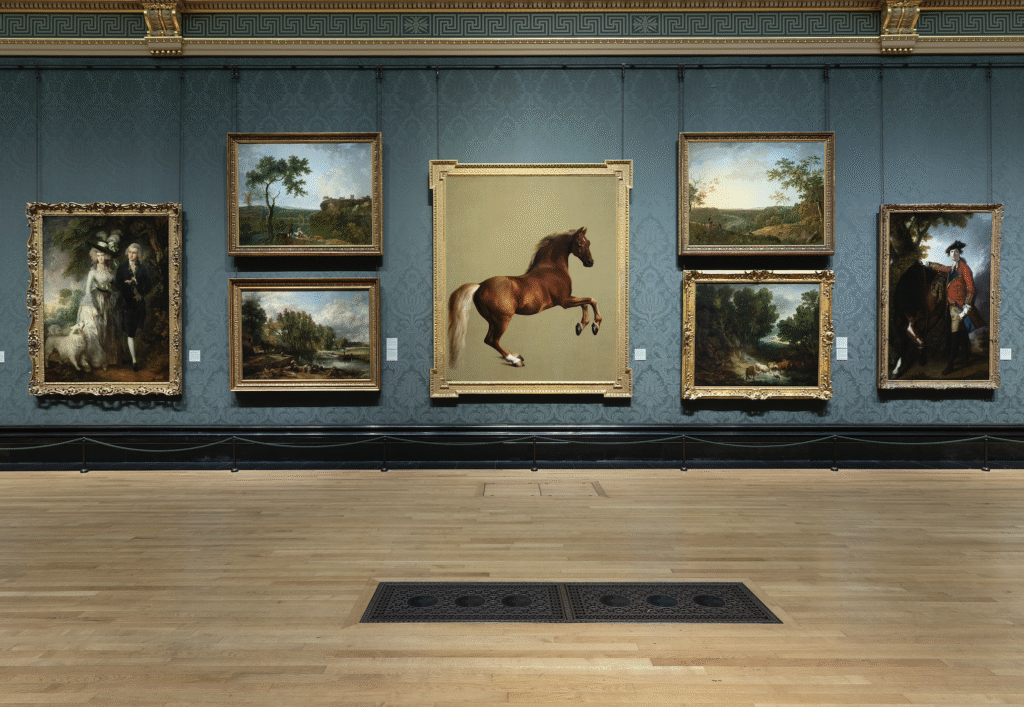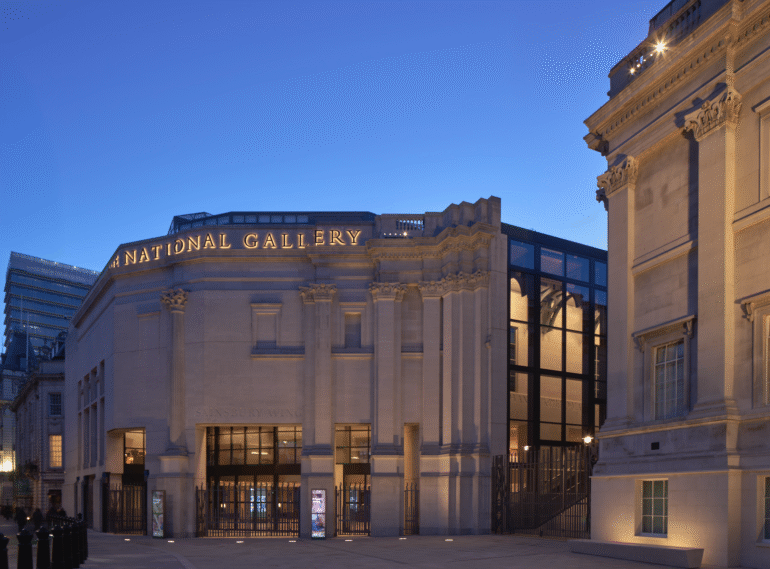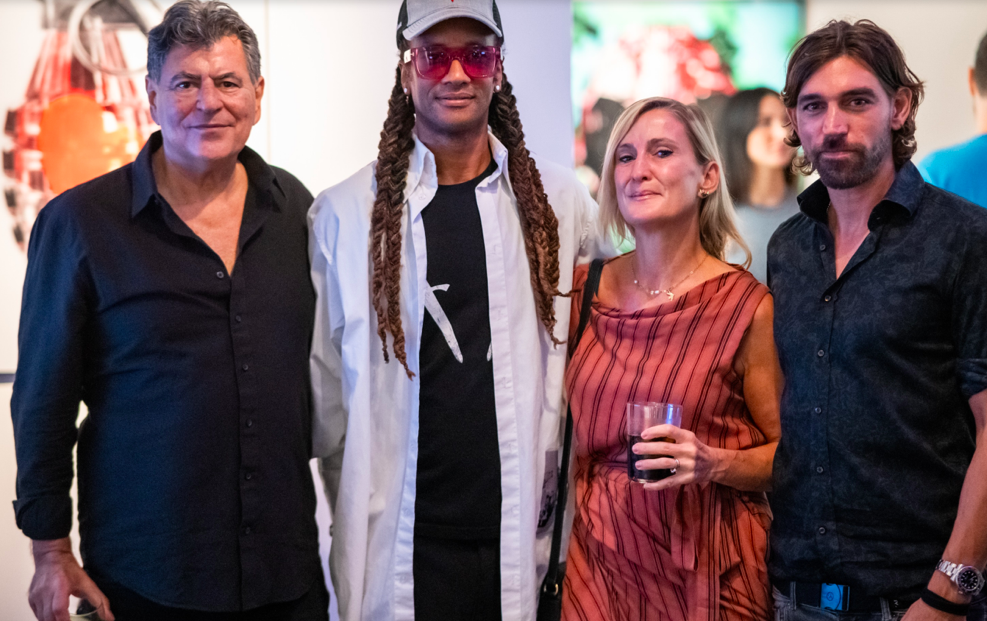The National Gallery reopened on 10th May, after a two year closure for renovations, with a radical and refreshing rehang of its collection. The redisplay of the National collections features rooms dedicated to individual artists including Titian (active about 1506‒1576), Rembrandt (1606‒1669) and Monet (1840‒1926). For the first time, there are also rooms dedicated to the genre of still life as practised by artists over time, materials such as pastel and gold, and even a work suspended from the ceiling. Titled C C Land: The Wonder of Art, the rehang features eight new Bicentenary acquisitions and 20 new loans.
As the visitor travels through the Gallery, they will see over 1,000 works of art, tracing the development of painting in the Western European tradition from the 13th to the 20th centuries from beloved favourites to paintings never previously seen in the National Gallery.
Works from the medieval and Renaissance periods return to the Sainsbury Wing following the two-year
closure for building works. Newly curated displays include an opening room containing works from the 14th to the 16th centuries, including The Wilton Diptych (English or French, about 1395‒9) and Leonardo Da Vinci’s (1452‒1519) The Virgin of the Rocks (about 1491/2‒9 and 1506‒8), which together ask visitors to consider the full spectrum of what painting can do. The galleries in the Sainsbury Wing were designed to evoke a Renaissance basilica and its architectural features make it possible to display paintings in a similar way to how they would have originally been encountered. A chapel-like space is entirely dedicated to Piero della Francesca (about 1415/20–1492).
In a first for the National Gallery, Segna di Bonaventura’s (active 1298; died 1326/31) Crucifix (about 1310‒15) will be visible down the central spine of the Sainsbury Wing, suspended from the ceiling. This will enable today’s audiences to view the work in the way it would have been seen in the 14th century.

C C Land: The Wonder of Art presents several works back on display after long-term conservation projects. The Martyrdom of Saint Sebastian (completed 1475) by Antonio del Pollaiuolo (about 1432‒1498) and Piero del Pollaiuolo (about 1441‒before 1496) is back on show after nearly three years of conservation and scientific examination. At the other chronological end of the Gallery’s collection, Bathers (about 1894‒1905) by Cezanne (1839–1906) is displayed in a new frame following its recent conservation treatment, which revealed the surprising discovery of French newspaper cuttings along the side of the canvas added during a previous relining treatment. A new frame has been created for the San Pier Maggiore Altarpiece (1370‒1) by Jacopo di Cione (documented 1365; died 1398‒1400) and workshop, with gold leaf burnished by volunteers from across the National Gallery’s staff.
The National Gallery hopes visitors will encounter paintings and artworks they may never have seen before, and hopefully see paintings through a new lens. Room 42 hosts a celebration of works in the medium of pastel, which the Gallery has never before displayed together – from 18th-century portraits, to Edgar Degas’s (1834‒1917) newly acquired Ballet Dancers (1888). It will also include the Lavergne Family Breakfast (1754) by Jean-Etienne Liotard (1702‒1789), the subject of a critically acclaimed exhibition in 2023.

© The National Gallery, London.
Works acquired during the Bicentenary year are on display and include La Psyché (The Full-length Mirror), about 1869‒70, by Eva Gonzalès (1849‒1883), After the Audience (1879) by Sir Lawrence Alma-Tadema (1836 –1912), and Eucharist (about 1637‒40), one of the greatest paintings of the Last Supper, by Nicolas Poussin (1594–1664). From June 2025, Corner of a Café-Concert (1878‒80) and Au café (1878) by Edouard Manet (1832‒1883), originally composed on one canvas that the artist cut in half, will be reunited, thanks to the latter coming to the Gallery on loan from the Swiss Confederation, Federal Office of Culture, Oskar Reinhart Collection ‘Am Römerholz’, Winterthur.
In addition, visitors will encounter many works they have come to know and love. Two paintings from the Turner Bequest, Dido Building Carthage (1815) and Sun Rising through Vapour (before 1807), will remain on view alongside the works of Claude (1604/5? – 1682), as specified in Joseph Mallord William Turner’s ( (1775‒1851) will. His desire to be shown alongside a much admired artist of the past has guided the whole philosophy of the redisplay. The display in Central Hall will continue to celebrate the tradition of ambitious large-scale portraiture from 1550‒1900, from Veronese to Lawrence.
C C Land: The Wonder of Art also features a brand new audio guide, powered by Smartify. As well as the Gallery’s curators and staff, visitors can learn about our paintings with esteemed guests including HRH Princess Eugenie, Stephen Fry and Axel Scheffler, as well as experts in fashion, horticulture and history. Visitors will be able to make their own personalised tours or choose from specially curated routes.
Christine Riding, Director of Collections and Research, said: “This has been a once in lifetime opportunity to redisplay one of the greatest art collections anywhere in the world. We have thought very carefully about the journey, from gallery to gallery, as our visitors explore the often surprising connections between artists, across time and place. We hope it will joy to visitors both new and old.”
For further information go to: https://www.nationalgallery.org.uk/visiting/plan-your-visit



